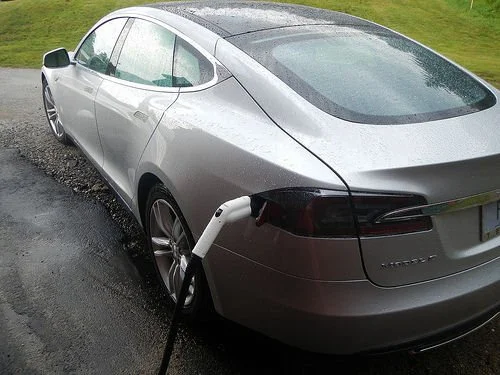Recently, a gentleman from Quebec drove his 2012 Ford Focus Electric car up the Mt. Washington Auto Road to the summit of the Northeast’s highest peak. This was the first mass produced all electric vehicle to reach the peak taking the winding 8-mile road with an average grade of 12%.
Sylvain Juteau of Three Rivers, Quebec drove the car 800 miles from his home town to a vacation in Maine and then decided to take the car to the summit of nearby Mt. Washington, located in Pinkham Notch, NH. He commented, “You can easily get 100,000 miles from your batteries and brake pads and the real time data you get from the car teaches you to drive more intelligently while the brakes regenerate the battery when you slow down.”
The car requires 2.5 hours to charge and can run on the charge for about 100 miles. Juteau used about half of his available charge on the way up and he recovered and recharged on the way down the mountain road. The auto road is one of the nation’s oldest man-made attractions opening in 1861. In fact, the first automobile that climbed the road in 1899 was a Stanley Steamer driven by Freelon O. Stanley himself. For info about the auto road check www.mtwashingtonautoroad.com
This story brought back memories of my first ride in a hybrid Toyota Prius in 2001with a friend, who was a newly elected official in Colorado. One of the perks of his political position was a vehicle to use and my friend felt compelled to request a hybrid car instead of a 4-wheel drive that the other officials had always requested. Over the years, this memory encouraged me to often suggest that all government automobile purchases should be electric vehicles and while the government might put its money where its mouth should be, all public buildings should have roof top solar collectors, too. Can you imagine what this level of purchases would do for these products or how it could lead the way to fight climate change?
Instead, even though there were 200,000 of the Toyota Prius sold in 2012, it was announced that General Motors has idled the assembly plant, which manufactures the electric Chevy Volt because they’ve sold less than half of their annual projection (13,500 cars sold and 40,000 projected sales). The electric Nissan Leaf had sold 4,288 in 2012 through August. And the Ford Focus Electric vehicle, the car that made it to the top of Mt. Washington had sold only 169 (in the USA). Think about the number of vehicles if every level of government (town, city, county, state, Federal) was mandated to purchase electric vehicles starting this year; hmmm, that’s a big number.
Electric Vehicle Charging Station Installed on Auto Road
In an August 2013 followup to the above story, the Mt. Washington Auto Road has installed the first ever Electric Vehicle Charging Station. Less than 24 hours later, the all electric vehicle, a Tesla S Model, pulled in for a charge. The Auto Road does not "charge for a charge", though a donation slot is there for those so inclined. Fifteen more Teslas from the New England chapter of the Tesla Car Club arrived for a drive to the summit.
Auto Road GM Howie Wemyss decided this was the year to have the Clipper Creek CS 90 charger installed. "Considering that we are hosting the Mt. Washington Auto Road Alt Energy Summit event here on September 14 and 15, there couldn't be a better time to make this kind of energy available onsite," Wemyss noted. "We are looking at adding an electric vehicle to our line-up sometime this year and have been evaluating various alternative fuel sources for our stages, as well," Wemyss added. The Auto Road currently derives about 80% of the energy used for the base building operations from an onsite hydro power source.
Daniel Einspanjer, a Tesla S model owner and organizer of the group's gathering commented, "The trip up and down the mountain was as breath-taking as always and everyone enjoyed it. As expected, the trip down was excellent. The cars could not have been built better for descending a mountain. Stable, low to the ground, and aerodynamic, the cars handle wonderfully on the road. Additionally, the regenerative braking means that you don't have to worry about a straining engine or overheating brakes as the car gracefully glides down at a comfortable and safe speed requiring only occasional touches of the brakes at the hairpin turns."
Perhaps even more impressive than the view and drive down was the energy consumption data: "The 8 mile long and 4,600 feet high ascent consumes somewhere between 12 and 14 kW of energy (about 40 to 45 miles of rated range), while the descent reclaims between 5 and 7 kW of energy (about 20 to 23 miles of rated range) through regenerative braking. There are currently more than 13,000 Teslas on the road in the US" Einspanjer noted.


